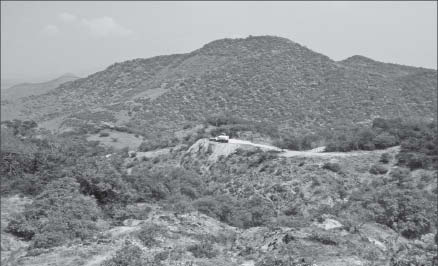While largely focused on advancing its Tepal gold-copper project in Western Mexico towards production, Geologix Explorations (GIX-T) has also been busy with regional exploration to improve the project’s long-term potential.
Most recently, the company announced the results of a property-wide airborne geophysical survey over its whole 172-sq.-km Tepal property package, much of which has seen little to no exploration.
Geologix reports that it has identified seven strong geophysical targets with the survey, including three priority targets with coincident gold, copper, silver and molybdenum that have also seen preliminary groundwork. The new target areas range from 3 by 3 km to 1 by 1 km, and appear to have similar geophysical and geological characteristics to the already established North, South and Tizate zones.
The company is following up on the targets with sampling, mapping and trenching as it plans a future drill program on the targets.
The company released the survey data just over a week after announcing results from its drill program at Tepal. The 160-hole program largely consisted of infill drilling to upgrade resources, but the company was also exploring the limits of the established deposits.
The latest results from the North zone included 141 metres grading 0.87 gram gold per tonne and 0.36% copper, and 76 metres averaging 0.77 gram gold and 0.59% copper, while 80 of the latest 91 holes reported hit mineralization that matched or was greater than the company’s internal cut-off.
January results from the South zone showed the potential to increase the resource at depth, with long, higher-grade intervals pushing mineralization 200 metres deeper than the 2011 planned pit outline. Hole 11-26 hit 104 metres grading 1.45 grams gold and 0.44% copper starting at 317 metres downhole, and hole 11-128 returned 121 metres grading 0.72 gram gold and 0.18% copper from 316 metres depth.
Geologix will incorporate results from its recent drill program into an updated resource that should be out by late March. The updated resource will then be incorporated into a prefeasibility study that should be in hand by June, which will in turn allow the company to start the permitting process for Tepal.
The current Tepal resource, covering the North, South and Tizate zones, stands at 57.8 million indicated tonnes grading 0.42 gram gold and 0.24% copper for 800,000 oz. gold and 311 million lbs. copper, plus 93.2 million inferred tonnes grading 0.28 gram gold and 0.2% copper for a further 800,000 oz. gold and 415 million lbs. copper.
When Geologix secured rights to the property in late 2009 for what would amount to US$6.2 million, Tepal hosted 1.2 million oz. gold and 412 million lbs. copper. The company then discovered the true potential of the Tizate zone to add significantly to the resource.
A 2011 preliminary economic assessment, based on US$1,000 per oz. gold and US$2.75 per lb. copper, established an 18-year mine life producing an average of 134,000 equivalent oz. gold per year at 23,000 tonnes per day. The mine plan includes an oxide heap-leach component, making up about 10% of total ore, and a sulphide flotation circuit for the rest. Heap-leach recoveries are expected at 77% for gold and negligible for copper, and sulphide recoveries are estimated at 87% for copper and 63% for gold.
For its upcoming prefeasibility study, the company has already ramped up planned production to 200,000 equivalent oz. gold per year with an 11-year, 35,000-tonne-per-day operation.
Jeff Wilson, vice-president of corporate communications, says the company increased the throughput mostly to get over the 100,000-oz.-gold-per-year threshold that makes projects more attractive to majors.
The 2011 PEA established a net present value of US$412 million using a 5% discount rate and a 22% internal rate of return. The study also established a $312-million capital expenditure including sustaining capital, with payback in just over four years, owing to the planned increase in throughput for the prefeasibility study. The PEA also defined a cash cost of US$478 per equivalent oz. gold.
Geologix’s share price climbed 6¢ to 42¢ on the day the geophysical survey news was released, with 3.8 million shares traded. The company hit a 52-week high of 82¢ in March 2011 and a low of 19¢ in December. There are 135.8 million shares outstanding.


Be the first to comment on "Geologix looks at the bigger picture at Tepal"